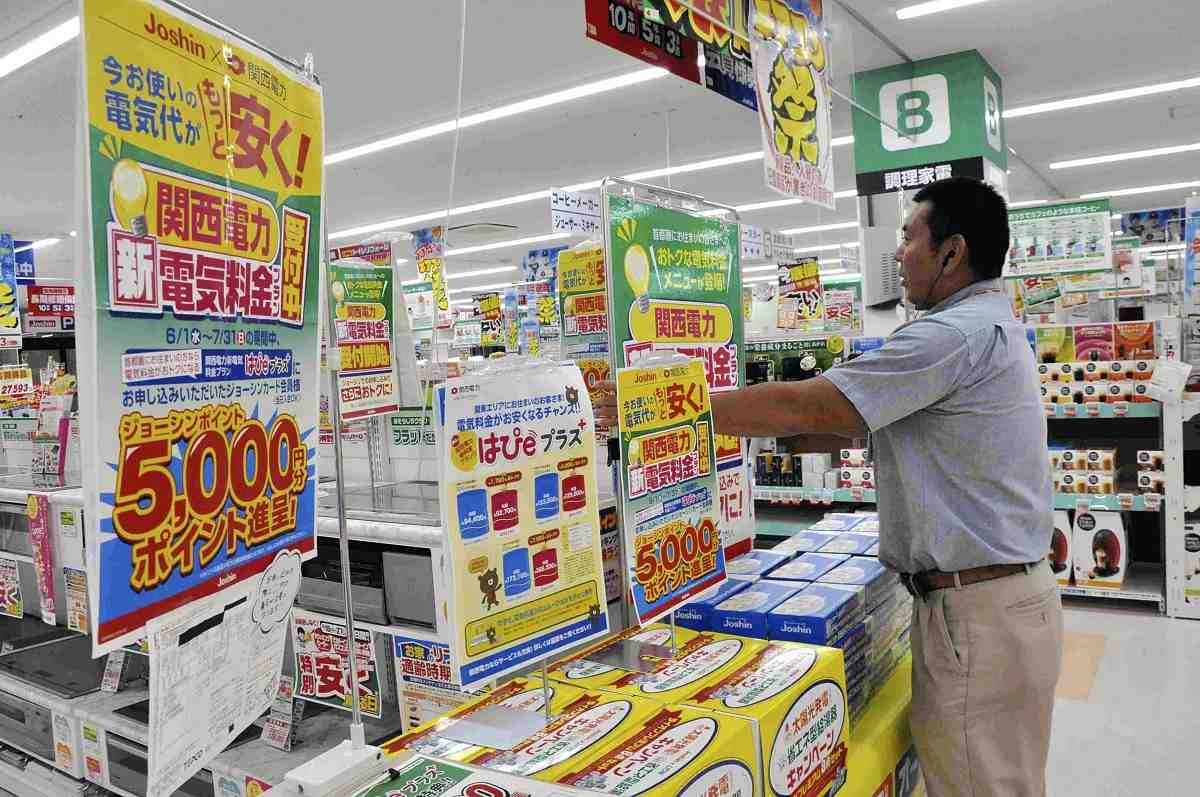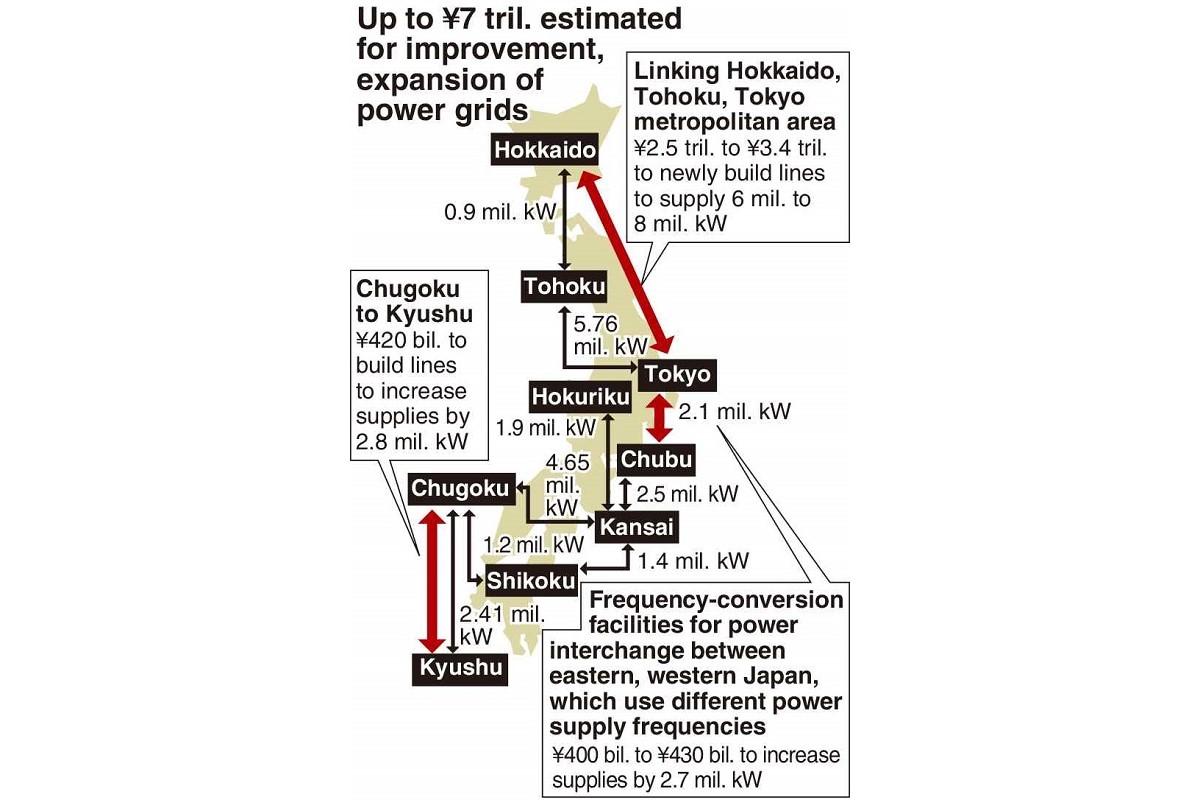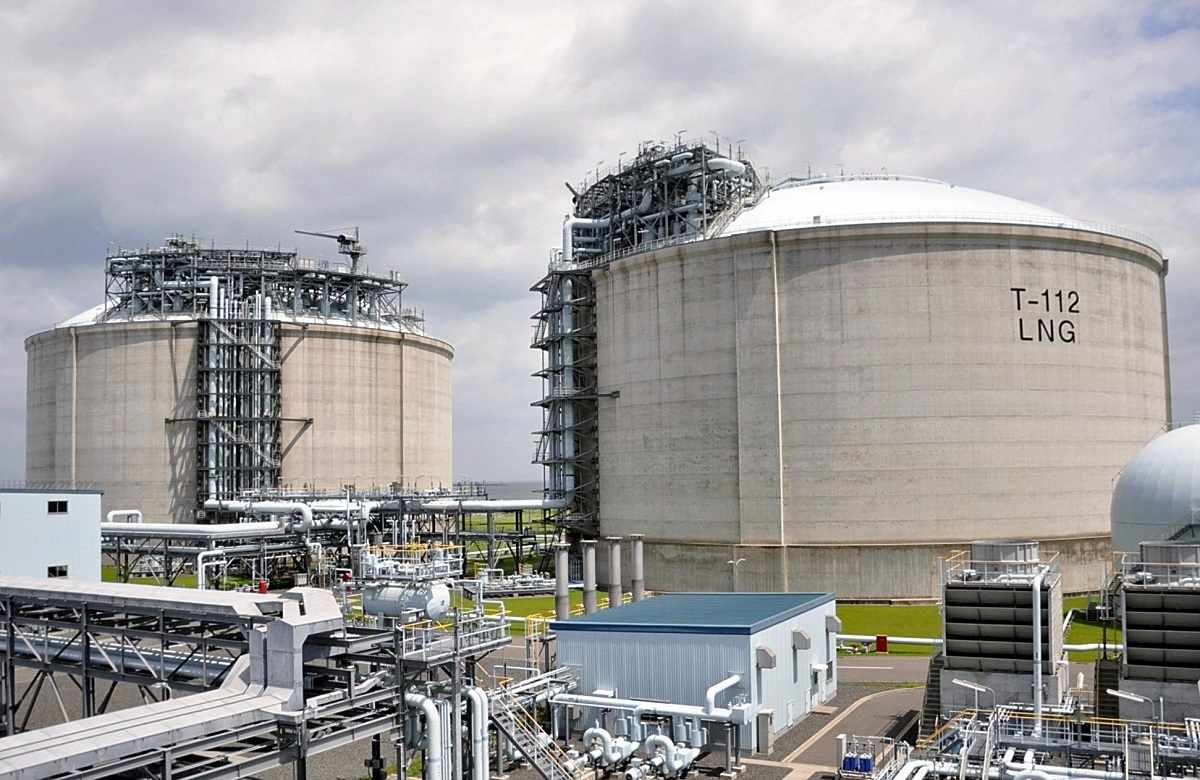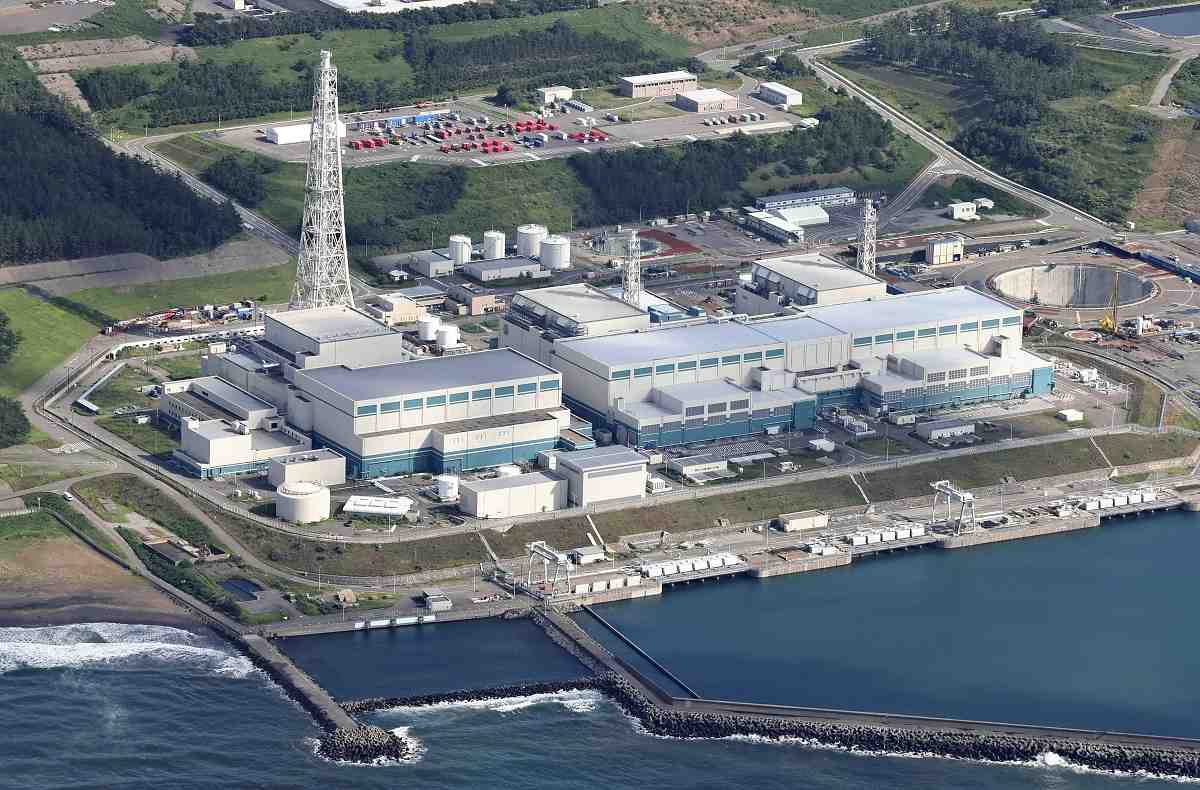Energy Challenges / Deficient Electricity Transmission Network Causing Imbalanced Supply and Demand

Advertisements by Kansai Electric Power Co. are seen at an electronics retail store in Itabashi Ward, Tokyo, in June 2016 touting its lower rates in the service area of Tokyo Electric Power Company Holdings, Inc.
7:00 JST, November 29, 2023
Recent events have shaken global energy markets and affected Japan, which relies on imports for most of its fuel. This is the second installment of a series examining potential challenges for the nation’s electric power industry.
***
An executive of real estate company Toyo Seiko Co. in Moriguchi, Osaka Prefecture, was disappointed to read an email from Shikoku Electric Power Co. one evening last month. The email sent on Oct. 28 said the utility firm planned to implement an “output control” measure that involved temporarily suspending some power generation the next day as an excess of supply was predicted.
“Not again,” senior managing director Masatoshi Maekawa thought.
Toyo Seiko is in the solar power generation business in Tokushima and other prefectures and has signed agreements to sell electricity to power companies. During output control, electricity will not be purchased, meaning the company must discard surplus electricity. The firm lost about ¥1.6 million in revenue from March to June at one power generation facility alone.
There is a risk of blackouts occurring when the supply and demand of electricity are not balanced, and the latest move by Shikoku Electric Power was a measure to prevent an imbalance due to the generation of large quantities of power in Shikoku.
Maekawa was angry, thinking to himself: “Wasn’t the promotion of renewable energy a national policy? The basis of the project is crumbling.”
The amount of renewable energy generated in Japan in fiscal 2020 was about four times larger than the figure in fiscal 2012. Output control was implemented 194 times from April to September this year, about three times the level in the same period last year. Output control would not be necessary if power could be supplied from Shikoku to the Tokyo metropolitan area and other areas, but the development of power grids connecting regions nationwide has not yet been fully implemented.
Power cables linking Hokkaido and Honshu have a transmission capacity of only 900,000 kilowatts. The capacity is also limited regarding transmission lines linking Honshu and Kyushu and Honshu and Shikoku. There are many areas suitable for solar power generation in the Kyushu and Shikoku regions.
The government in July and August asked households and businesses in areas served by Tokyo Electric Power Company Holdings, Inc. to reduce electricity consumption as the supply and demand was likely to become tight. However, Kansai Electric Power Co., Kyushu Electric Power Co. and Shikoku Electric Power implemented output control within their service areas during the same period, causing a mismatch across the nation.
Japan’s major power utilities lost their electricity monopoly in 2016 when the retail electricity sector was fully liberalized. However, Takehiko Kakiuchi, chairman of Mitsubishi Corp., which plans offshore wind power generation projects, said the current power grid is fragmented by region and failing to be an optimal solution to fill the gap between supply and demand nationwide.
“The government should once again discuss the power generation system,” Kakiuchi said.
Kazuhiro Ikebe, chairman of the Federation of Electric Power Companies of Japan and president of Kyushu Electric Power, said: “Improving and expanding utility power grids will not proceed smoothly partly because of objections from local communities.”
However, some have suggested that the power transmission and distribution divisions of electric power companies should be integrated, as, according to a senior official of the Economy, Trade and Industry Ministry, not only the construction of new power plants, but also measures to deal with the aging of existing power grids will become a major burden.

Source: Economy, Trade and Industry Ministry and others. Figures in kilowatts are operational capacity of main grids
The European Union in March agreed on a plan to double the existing share of renewable energy in the total EU energy consumption to 42.5% by 2030. Europe has a cross-border electricity transmission system. In 2021, a new interconnection, in which about ¥250 billion was invested, went into operation between Britain and Norway.
Japan plans to raise the share of renewable energy sources to 36%-38% by fiscal 2030, about double the fiscal 2019 level. Projections made last year estimate that about ¥6 trillion to ¥7 trillion will be needed to develop the electricity transmission network.
“Considering the enormous amount of money that is being diverted out of the country to procure energy, developing power grids that make use of purely domestic renewable energy could be a realistic option,” said Mei Makinouchi, a deputy chief researcher at Dai-ichi Life Research Institute Inc.
"Business" POPULAR ARTICLE
-

Keidanren Chairman Yoshinobu Tsutsui Visits Kashiwazaki-Kariwa Nuclear Power Plant; Inspects New Emergency Safety System
-

Tokyo Economic Security Forum to Hold Inaugural Meeting Amid Tense Global Environment
-

Imports of Rare Earths from China Facing Delays, May Be Caused by Deterioration of Japan-China Relations
-

University of Tokyo Professor Discusses Japanese Economic Security in Interview Ahead of Forum
-

Japan Pulls out of Vietnam Nuclear Project, Complicating Hanoi’s Power Plans
JN ACCESS RANKING
-

Keidanren Chairman Yoshinobu Tsutsui Visits Kashiwazaki-Kariwa Nuclear Power Plant; Inspects New Emergency Safety System
-

Tokyo Economic Security Forum to Hold Inaugural Meeting Amid Tense Global Environment
-

Imports of Rare Earths from China Facing Delays, May Be Caused by Deterioration of Japan-China Relations
-

University of Tokyo Professor Discusses Japanese Economic Security in Interview Ahead of Forum
-

Japan Pulls out of Vietnam Nuclear Project, Complicating Hanoi’s Power Plans



























